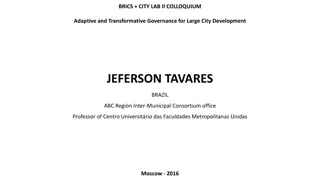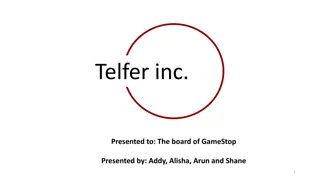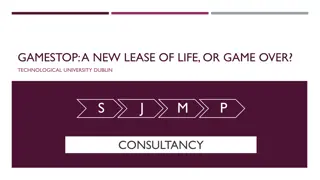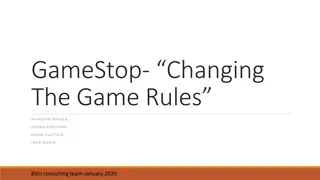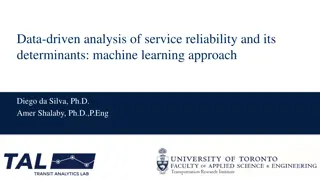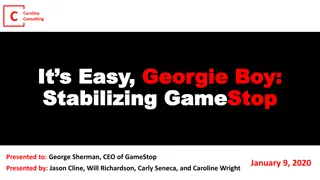GameStop's Digital Transformation Strategy at Insper, Sao Paulo, Brazil
Insper, Sao Paulo, Brazil, presented a digital transformation strategy for GameStop, focusing on market analysis, alternatives, recommendations, and a new value proposition based on infrastructure, services, products, and media. The strategy includes closing physical stores, website transformation, mobile platform launch, and GameStop University for training. Key insights cover market changes, competition, online-first trends, and the blend of digital and physical experiences in the gaming industry.
Download Presentation

Please find below an Image/Link to download the presentation.
The content on the website is provided AS IS for your information and personal use only. It may not be sold, licensed, or shared on other websites without obtaining consent from the author.If you encounter any issues during the download, it is possible that the publisher has removed the file from their server.
You are allowed to download the files provided on this website for personal or commercial use, subject to the condition that they are used lawfully. All files are the property of their respective owners.
The content on the website is provided AS IS for your information and personal use only. It may not be sold, licensed, or shared on other websites without obtaining consent from the author.
E N D
Presentation Transcript
Insper | Sao Paulo Brazil GameStop digital transformation strategy presented by: Decio Soares Nahana Caetano Romilson Teles Tobias Walzberg presenting to: George Sherman Sarah Beattie & Team
agenda 1 | Analysis of the situation 2 | Alternatives & recommendations 3 | Implementation 4 | Wrap-up
analysis of the situation
wrapped video games titles Market changes Stock Price $5 USD 5830 stores 100% Became public NYSE Barnes & Nobles 1984 1988 1996 1999 2019 2002 2014 2000/2010 Globalization Stock Price $53 USD Bankrupt (acquisition by Leonard Riggio) Babbage s foundation GameStop - rebrand
Market changes Customer Mainly teenagers Competition Bricks & Mortar (BestBuy, Target, Walmart, Kmart) Technology Traditional shrink- wrapped video games titles From Download sites (Originm UpPlay, Steam) Noteworthy (Gamefly, Amazon) Online-first download Streamed experience Teenagers & early adults (31 years old) millennials To
Digital Transformation 1 | Previsibility Physital 3 drivers for digital transformation 2| Recurrence Digital & Physical Experience 3 | Agility
alternatives & recommendations
GameStop new value proposition in based in 4 pillars Infraestructure Services Products Media
GameStop new value proposition in based in 4 pillars - Strategically closing of physical stores - Website transformation (big data analytics inclusion) - Redesign of GameStop website and launching of a platform to mobile devices (proprietary technology) Infraestructure
GameStop new value proposition in based in 4 pillars - GameStop University: Training center ( How to be became the best player , Be a YouTube video streamer , etc) Open space for coach use eSport practices - Loot crate subscription (merchandising) - Marketplace (Amazon) Services
GameStop new value proposition in based in 4 pillars - Game consoles - Game accessories - Collectables - Merchandising Products
GameStop new value proposition in based in 4 pillars - Full digital presence in social media - Focus on millennial needs - Use social media to reposition the brand (focus on institutional aspects >>> Love Brand) and continuously engage the game stoppers - Focus on SEM (Search Engine Optimization, App Search Optimization), GoogleAds, InstagramAds to increase sales - Restructure of Game Informer magazine and e-zine Media
Implementation plan 1. Branding (brand architecture strategy) 2. Services deployment 3. Product sourcing 4. Media presence 5. Infrastructure deployment
Brand architecture strategy endorsed independent monolithic Fanta A Coca-Cola Company Intel Microsoft Apple Samsung P&G LVMH
Brand architecture strategy endorsed independent monolithic - Risk - Sinergy + Costs + Risk + Sinergy - Costs
Around 90% of the world most valuable brand adopt a monolithic brand architecture strategy. source: Interbrand
Brand architecture strategy endorsed independent monolithic GameStop EB Games Micromania ThinkGeek Game Informer
Brand architecture strategy endorsed independent monolithic GameStop
Services deployment Online presence Becoming present in an online market place (1Q20) Offering current inventory Market assessment what products to specialize in Recurring activities: Trend analysis (e.g. Google analytics) Portfolio assessment and adjustment Infrastructure assessment and adjustment Rolling out new product portfolio (2Q20) Loot crates subscription Collectibles and accessories Positioning the company as a reference for trading game related products (2Q20 4Q20) Platform within a platform - leveraging amazon.com characteristics Game university (3Q20 on going) Infrastructure assessment (3Q20) Identifying coaches/professors and content creators (4Q20) Adapt physical space to host events (4Q20) Online and physical sales (1Q21 on going)
Product sourcing Product portfolio Sale of inventories in consoles and games (1Q20) Inventory assessment what and at which price to sell Market assessment what products to specialize in Recurring activities: Trend analysis (e.g. Google analytics) Portfolio assessment and adjustment Partnerships with key suppliers (e.g. FUNKO) Procurement of new products (2Q20 on going) Development of Loot crates identifying suppliers Crate composition Collectibles and accessories 7 procurement steps Partnering with key suppliers (2Q20 on going) Determining key suppliers desirables Approaching key suppliers driving demand
Media presence Branding New brand strategy (1Q20 4Q21) Recurring activities: Social media Increase presence in main media vehicle: youtube (1Q20 on going) Use the channel to distribute proprietary content and streaming events (1Q20 on going) Sponsor key gamers and events (1Q20 on going) Trend analysis (e.g. Google analytics) Brand love assessment Partnerships with key content creators Content deployment at selected platforms Online advertising to generate traffic Events Offline events leveraging physical presence Meet and greet
Infrastructure deployment Physical presence Recurring activities: Reduction of physical stores (1Q20 on going) Determine best locations for new stores outside malls (1Q20) Renew leasehold only for select stores at expiration revenue per sqft above current average (USD 657) Renegotiate remaining long-term leases (2Q20) Revenue per sqft tracking Location and demand assessment Layout improvement Assessment of additional offers (e.g. energy drinks) Physical site refurbishment To happen in waves: 100 conceptual stores (1Q20 2Q20) 250 top tier stores (4Q20 1Q21) 500 best locations (2Q21 1Q22) Reassess remaining stores (3Q20 on going)
risk analysis Risk Level Mitigation Intensify advertisement Aggressive sale strategy Phase out amazon.com presence Intensify analytics Restructuring of portfolio Low inventory Tracking sale cycle Drive demand (content creation) To happen in waves Creation of positive image through innovation Redundant systems cloud servers Keeping relations with alternative service providers Low adherence to mkt place low Low demand for products low Product obsolescence medium Backlash from closing stores high lacking IT Infrastructure medium
Financial assumptions Top line Bottom line Cost reduction by closing and relocating stores Sharp decrease in pre-owned product sales 80% cannibalization between in-store sales and marketplace Capex available for refurbishing Loot box to represent up to 15% of revenues Cost increase for analytics Additional services as new revenue streams High initial investment in advertising Rewards and e-zine growth based on rebranding and additional investments
Financial preliminary forecast in million USD Revenues COGS Gross Profit SG&A D + A Impairments Operating Earnigs (Loss) Interest EBT Taxes Net Income from continuing operations Income (loss) from discontinued operations Net income 2018 2020 8,285.3 $ 5,977.2 $ 2,308.1 $ 1,888.6 $ 105.6 $ 1,015.9 $ (702.0) $ 51.1 $ (753.1) $ 6,628.2 $ 4,781.8 $ 1,846.5 $ 1,322.0 $ $ $ 440.0 $ $ 388.9 $ 155.55 $ 233.3 $ 84.5 - 51.1 41.7 (794.8) $ 121.8 $ (673.0) $ 0 $ 233.3 Basic (loss) earnings per share $ (6.59) $ 2.28
Investments Capex requirements Opex Market place Loot crate infra Univ Games App development Big data Refurbishing Total 1,500,000 $ 750,000 $ 10,000,000 $ 500,000 $ 2,500,000 $ 42,500,000 $ 57,750,000 $ Marketing campaign Training IT incremental costs New processes Total 1,200,000 $ 750,000 $ 84,000,000 $ 750,000 $ 86,700,000 $
How to transform GameStop? Integration of digital and physical experience Focus on recurrence, previsibility and agility wrap-up Investment in new assets for digital transformation (cloud platform, app development, proprietary technology)
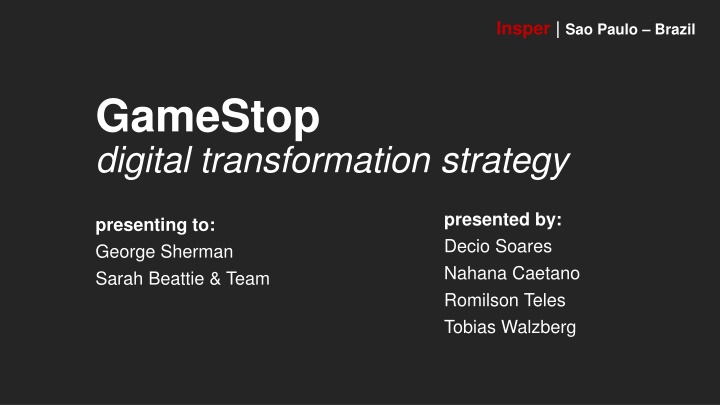

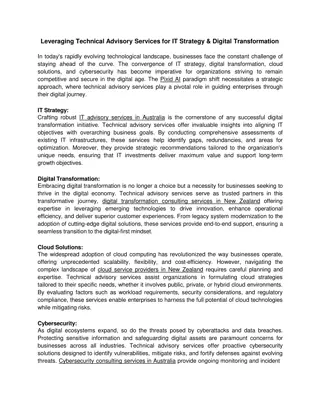
![Halal_Chicken_from_Brazil-_Ensuring_Quality_and_Authenticity[1]](/thumb/86918/halal-chicken-from-brazil-ensuring-quality-and-authenticity-1.jpg)










